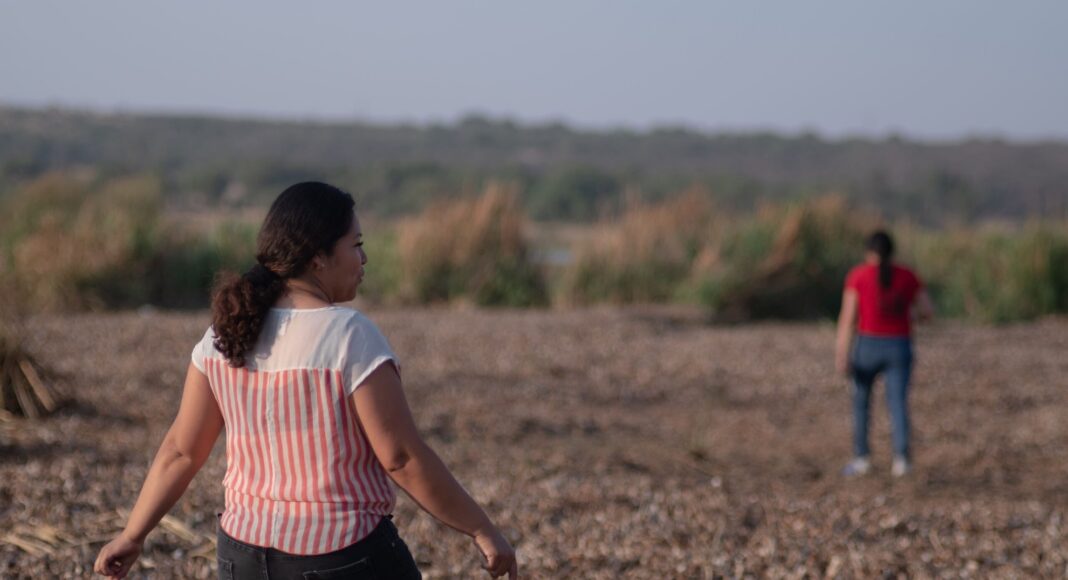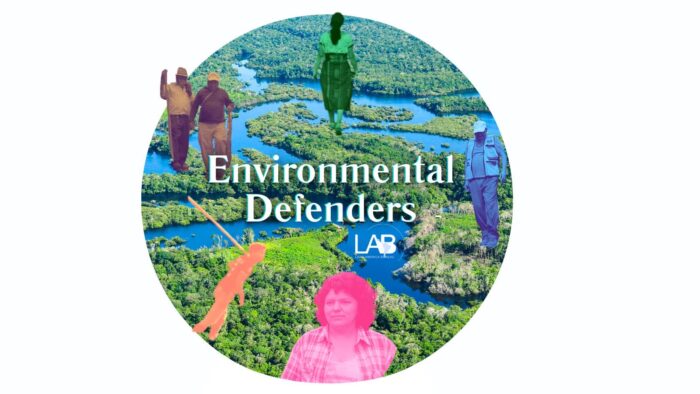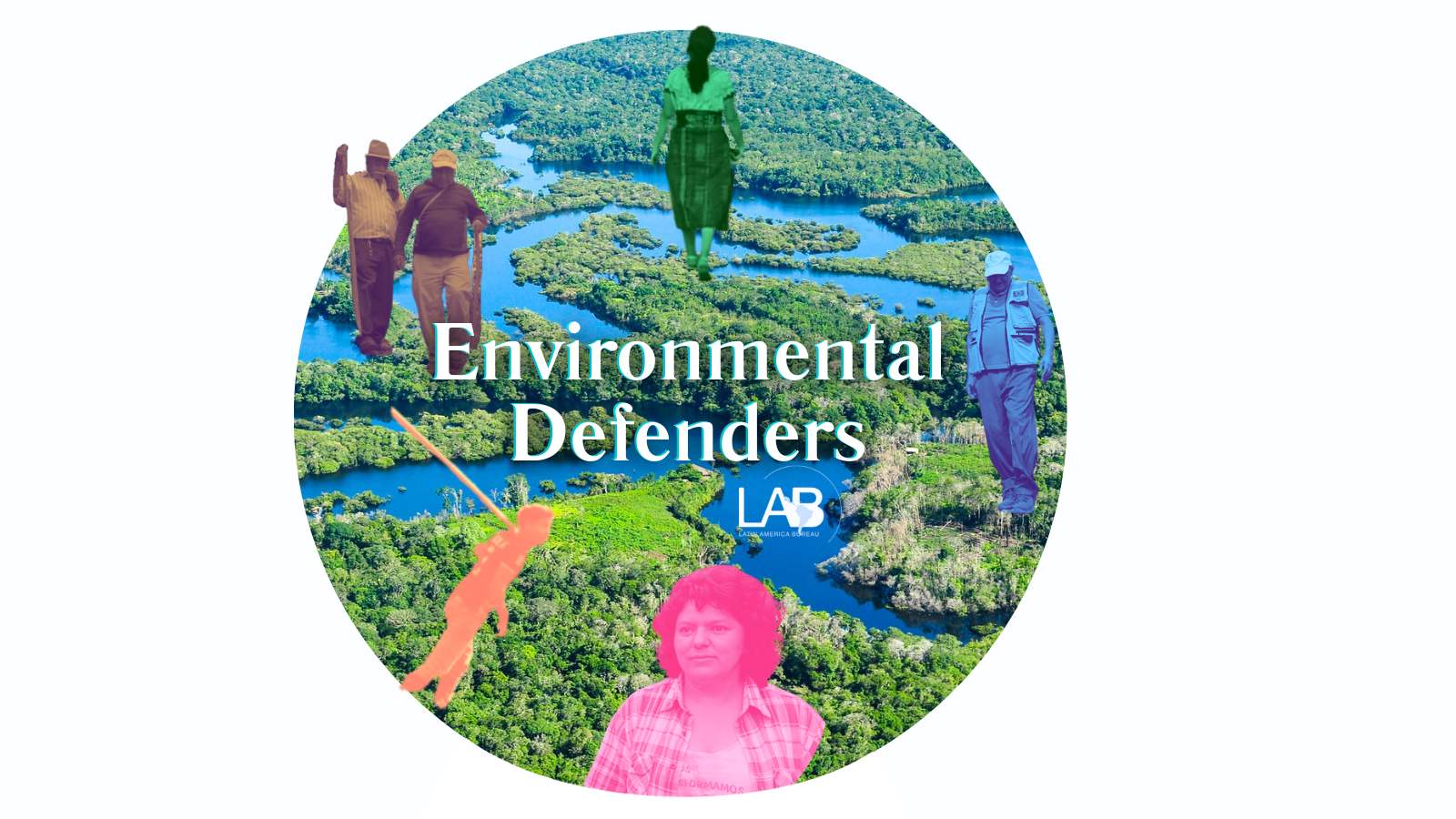Five years have passed since the Gas Natural del Noroeste company began installing a gas pipeline in the indigenous territory of San Juan Bautista de la Laguna in Lagos de Moreno municipality, Jalisco, Mexico. They did so without the consent of the local population. These past five years have been a struggle for the community, not only against this project, but also in defence of their lagoon, their land, and their existence as an Indigenous people. This is the story of the women embodying their resistance.
In March 2018 Hermelinda Nolasco, a local woman, short and thick-browed, was walking along the dirt streets of the town she grew up in when she came across a machine digging up her land. She asked the man driving it what the hole was for, and he replied that a gas pipeline was going to be installed. ‘And what’s that for?’ thought the 57-year-old woman, but what surprised her most was that no authority had approached her or other residents to ask them if they wanted a pipe for transporting gas underneath their homes.
The first license for construction issued to Gas Natural del Noroeste S.A. de C.V. (GNN) in January 2018 established that the company had to obtain the ‘consent of the neighbours of the properties that could be affected’ as a requirement for its authorization’.
The ZonaDocs team requested a copy of this consent from government officials, but they claim that the document does not exist. The license was authorized regardless of this requirement having been fulfilled.
The ruling also establishes that the company ‘must, through the media or pamphleting, inform the population before starting construction in each of the aforementioned neighborhoods’. This did not happen either. Neither Hermelinda nor other members of the community knew about the pipeline until it was already being installed.
Marbella is 37 years old. She is currently pursuing a doctoral degree and is a vital leader and advocate for her community. She also teaches at high school and university level, and sells cakes to top up her income.
She was convinced that her studies were over, but in 2015 and 2016 thousands of dead fish appeared in the lagoon and, given the lack of interest in the problem shown by the municipal government, Marbella decided that she would pursue a Master’s degree in Science and Technology in order to study the problem with institutional support. ‘The community realized, “If no one is interested, we’ll have to do it ourselves”’, and so began these studies of the water in the lagoon — the first of their kind.
Some of the findings of Marbella’s research reveal the presence of fertilizers and metals such as aluminium, iron and manganese in concentrations above the parameters established by the Mexican Official Standard.
Her work as a researcher and teacher is intertwined with her work as a defender of the lagoon, her land, and her community — just as the problems in the lagoon are intertwined with the gradual but constant invasion of her territory.
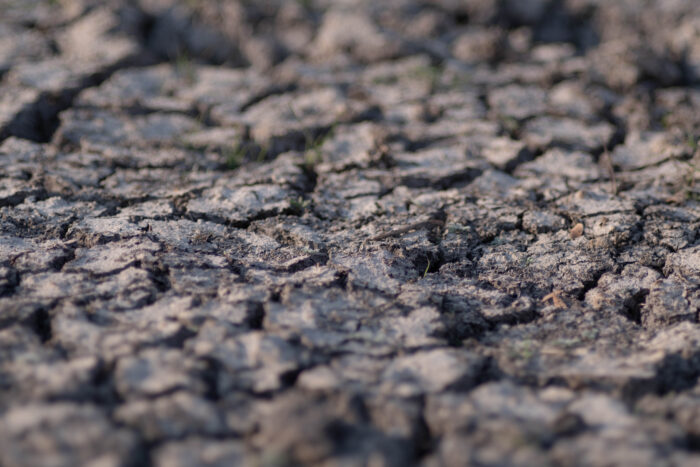
Industrialization or impoverishment?
The town of San Juan Bautista de la Laguna is full of contrasts. Near the houses – many of them made of mud, separated from each other by natural barriers of cactus and other local plants – stand large white concrete and steel blocks such as the Santorini water bottling plant or the Draxlmaier auto parts factory.
It is estimated that this community of Chichimeca origin is inhabited by more than 10,000 people, although there are no official statistics nor an up-to-date census.
Some of the older inhabitants remember the area as ‘a paradise’ during their childhood and youth. They speak of the clean and abundant water they would use in their vegetable gardens and an altogether different life, unimaginable today, in which people fished and swam in the lagoon and raised a few animals, producing food on their land to eat and sell.
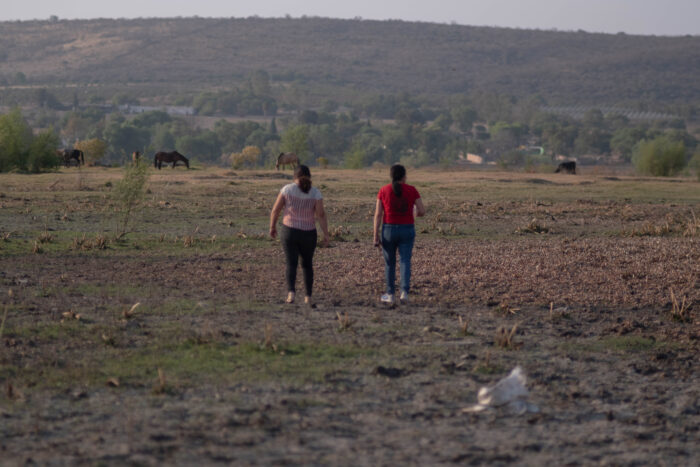
The population recalls that the lagoon began to dry up in the 1990s when economic activities in the area changed and brick production began to have a greater presence.
San Juan de la Laguna is located in the northern region of Los Altos de Jalisco, an area that has historically been characterized by poultry and livestock production. When the Nestlé company arrived in Lagos de Moreno in 1943, dairy production began to take on industrial dimensions that ‘modified the economic and cultural dynamics of the municipality and the region’.
After this, more transnational companies followed, and the land and water were largely appropriated for the production of fodder for dairy cattle.
Its location has sentenced the area to become a strategic point in the industrialization of Mexico’s Bajío region. Forbes Magazine has described the Bajío as the ‘Mexico’s Diamond’ for its ‘high potential and development in the industrial sector’.
In 2017, during the administration of Aristoteles Sandóval (2013 to 2018) the first industrial park in Lagos de Moreno was inaugurated, financed with public money, with the intention of integrating it into Bajío’s ‘automotive construction corridor’.
Since then, dozens of national and international companies have settled in the area, and the number of people working in the manufacture of transportation equipment has increased by 250 per cent.
In 2022, the Ministry of Finance registered 6.356 billion US dollars of Foreign Direct Investment (FDI) in this area. This figure represents 18 per cent% of total investment in the whole of Mexico in that year.
However, the arrival of more companies and the increase in the number of people employed has not brought wealth to the population. On the contrary: in 2015, the Jalisco Institute of Statistical and Geographic Information (IIEG) reported that over 35 per cent of the population in Lagos de Moreno was in a situation of multidimensional poverty and in 2020 that percentage kept rising. Meanwhile, those in extreme multidimensional poverty increased from 3.1 percent in 2015 to 4.4 per cent of the total population in 2020.
It is in this context of unequal industrial growth that the company Gas Natural del Noroeste arrived in San Juan, for its own piece of the ‘Diamond’.
The town of San Juan Bautista de la Laguna is surrounded by these industries, and the environmental effects they bring with them. Now, in addition, 3,584 linear metres of gas pipeline pass under their streets, their houses, and their lagoon.
The gas pipeline which the community’s inhabitants have been opposing since 2018 is a key piece in the industrialization process this territory has been subjected to. Not only does it present a risk to their lives, it also facilitates and promotes the arrival of more industries, and three generations have already seen what this has done to their lagoon. This is what residents Marbella de Santiago and Alejandra Aguila tell us as they walk along the cracked, dry earth where their ancestors used to swim.
The women who started a wave of resistance
Luz María and Diana Reyes were 13 and nine years old, respectively, when the pipeline began to be installed. They are now 18 and 14.
They had heard in the news about other communities defending their territory, about people opposing the flooding of their villages or the razing of their forests to install railways. Perhaps this is why they did not hesitate to take up the struggle against the pipeline.
Their mother was the one who encouraged them to get involved, even at a young age. ‘You have to get involved, you have to learn,’ she advised them when the opposition to the gas pipeline began. ‘We elders are on our way out, but you are just getting started’.
Their mother taught them that they have to defend what is theirs, their land.
And so the Reyes sisters joined the struggle that was brewing just a few metres from their home, but which had been gradually building strength for months like a wave that slowly gathers water to come crashing down with fury.
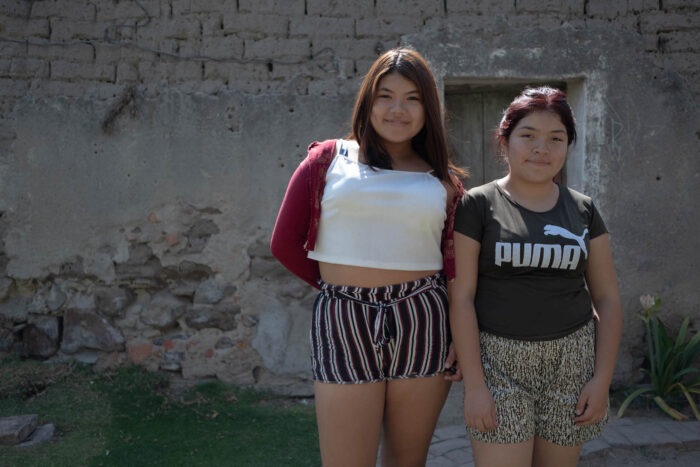
Like Hermelinda, other women had approached those operating the machinery to ask who had authorized their land to be torn up. Among them was Marbella, who had already been doing detailed work defending the lagoon for years and who is part of the General Council of the Indigenous People of San Juan de la Laguna.
After a few days, more people were talking about the pipeline. Meetings were held for the residents to ask each other whether or not they agreed with its installation. They were mostly women, but also men, of all ages. The wave was gathering water, little by little, taking on the strength of the locals’ resentment.
When Alejandra Águila saw her neighbors meeting, she didn’t hesitate to join them. She had already read news about the installation of the pipeline and information about natural gas extraction. ‘There’s nothing natural about it,’ she thought.
‘We organized ourselves to request information through official letters and demonstrations. We wanted to know what was going on in our home,’ recalls Alejandra.
But the municipal authorities did not respond.
They discovered that the project was not listed among the energy projects authorized by the Ministry of Energy (SENER) and the Energy Regulation Commission (CRE). When the community demanded their right to decide over their territory, all they got was a short presentation about the project, which, other than informing about its characteristics, was an effort on behalf of the company to convince the population of the benefits of installing the pipeline.
Company representatives spoke of paving the streets, installing street lights, and building schools in exchange for the community’s authorization to continue with the project. ‘That’s the government’s job,’ Marbella recalls the community responding to these promises, ‘and we don’t want that in exchange for the danger that this project will bring to the town. We don’t want it.’
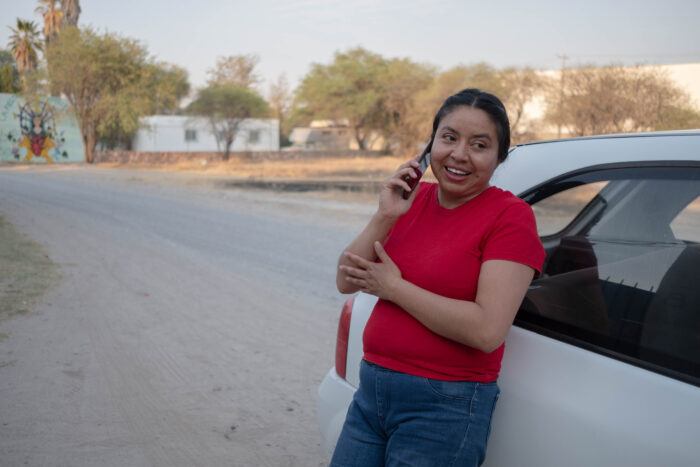
Methane gas contaminates the neighbourhood
Just as Alejandra guessed, there is indeed nothing natural about the gas that would flow through the pipeline. This was the first clarification made by Claudia Campero, geographer and environmental activist in defense of water and against fracking. ‘A lot of us are trying to stop using the term ‘natural gas’, because it’s so misleading’, explains the co-founder of the Mexican Alliance Against Fracking. ‘Gas is a fossil fuel, like coal or oil’.
But in addition to the broader effects it has on climate change, gas also has a direct socio-environmental impact on the populations near its infrastructure. Among the most serious are ‘a fragmentation of natural habitat areas, causing the loss of species and a reduction in biodiversity’. Also, ‘breaks and leaks, as well as waste generated in pumping and transfer stations, can potentially cause the contamination of soil, surface water and groundwater’. What’s more, ‘gas pipeline leaks or ruptures can cause explosions and fires’.
Representatives of Gas Natural del Noroeste have insisted to the community that the project will not have any leakages, but these are circumstances that no company can guarantee.
In 2005 a gas pipeline exploded in Tabasco, leaving two people dead; in 2021, five people died in Puebla after a gas pipeline explosion; and in November of last year alone two gas pipelines exploded in the states of Mexico and Veracruz, with 19 people injured.
Even in the very first conversations between the community and the company, signatures were gathered and it was made clear that the people of San Juan de la Laguna did not want the pipeline. But this did not stop construction.
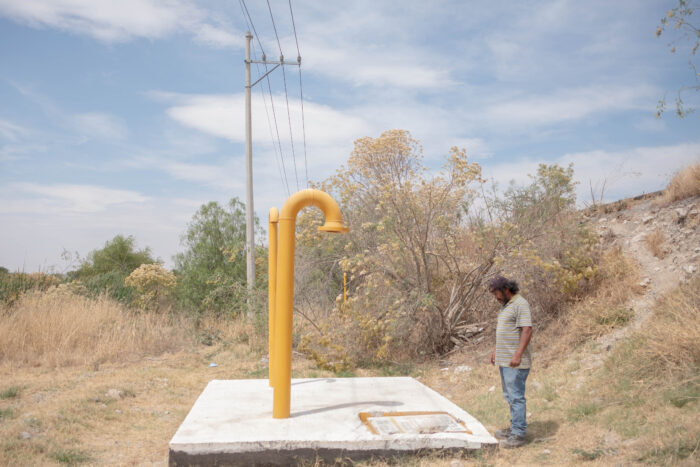
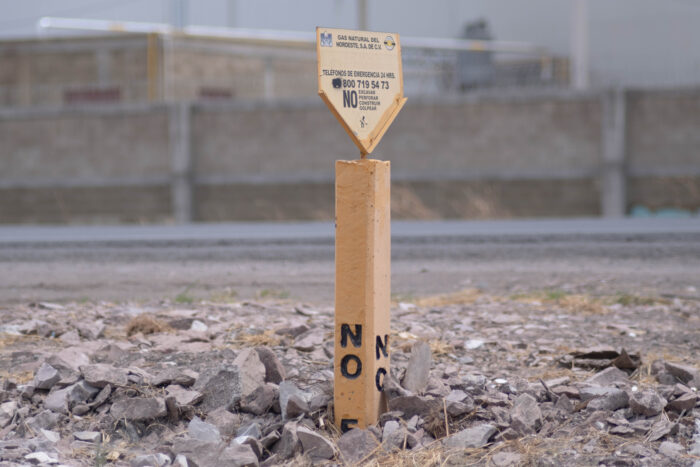
Marbella recalls how when the machines started work people showed up to tell them: ‘You can’t go ahead with this because we didn’t authorize it’. It was the beginning of a series of demonstrations in which members of the community put their bodies in front of the machinery to prevent them from excavating more land. ‘We took turns: in the morning those who worked in the afternoon went and in the afternoon those who worked in the morning went’, Alejandra recalls.
The company soon resorted to one of the most common strategies used to undermine the defence of territory: they tried to divide the community. ‘They took advantage of people’s poverty here,’ explains Alejandra. Representatives of Gas Natural del Noroeste approached people from the most impoverished neighbourhoods and offered them 200 pesos (about £9.50) each to make a human fence to defend the machines. ‘They paid our brothers to turn against us,’ Alejandra deplores.
Municipal, state, and even highway police arrived at the points where the community showed up to obstruct the continuation of the construction. ‘They saw that some of us were there all the time and began to intimidate us,’ says Marbella.
But criminalization did not stop the people of the lagoon. Women, men, children, young people, and the elderly continued to plant themselves on their land, in front of the machines. For their part, neither the municipal, state, nor federal authorities would hand over the permits, licenses, plans, and environmental impact studies requested by the community. The future of the territory was disputed on its dirt roads, between human bodies and machinery.
Strong roots
When the installation of the pipe came within a few meters of Isidra Facio’s house, she and the other women in her neighbourhood decided enough was enough. A Resistance Camp was set up, with the inhabitants of San Juan standing guard day and night, holding educational workshops and organizing themselves to strengthen their defence process.
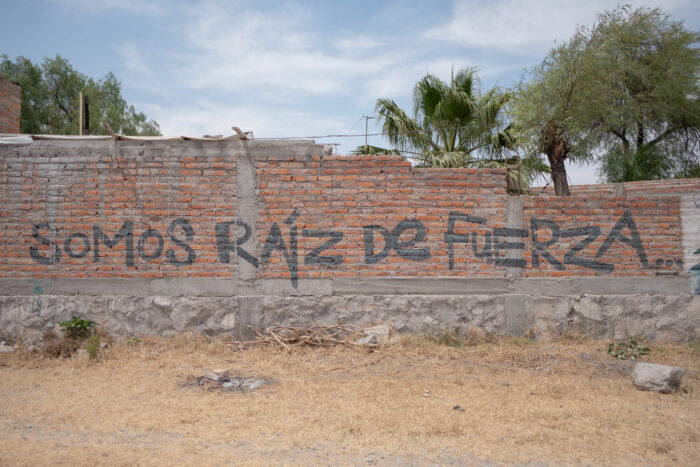
On May 7, the residents met with Tecutli Gómez, the mayor of Lagos de Moreno, to discuss the conflict. It was affirmed that ‘the will of the majority will be respected and the gas company will look for an alternative route for the pipeline’.
But the machines did not stop.
So the population came out again and stood at the construction site to express their indignation; but this time the police arrived and arrested three people.
For hours, the community heard nothing about their three detained neighbours. ‘That’s when people got really fired up,’ says Marbella. Those who were at the demonstration went to the town hall to demand their release, but they were not there. Nor were they at the police station. For hours no information was given about the whereabouts of their comrades.
‘We went to the town hall and wouldn’t let anyone in or out. “Let’s see who gives in first”, we said,’ Isidra recalls angrily. ‘We are not leaving here until our friends appear,’ demanded the inhabitants of San Juan and local students who joined them that afternoon.
Later, the Jalisco state government announced the arrest in a press conference and, after more than 20 hours, the protestors were released. But the Public Prosecutor’s Office of the Altos Norte Delegation of Jalisco State opened investigation files that to this day have not been closed.
That day marked San Juan de la Laguna. The authorities’ intention to weaken the struggle, although it did hurt the detainees, also fueled the community’s indignation. The movement, as manifested in a mural in their encampment, began to take root.
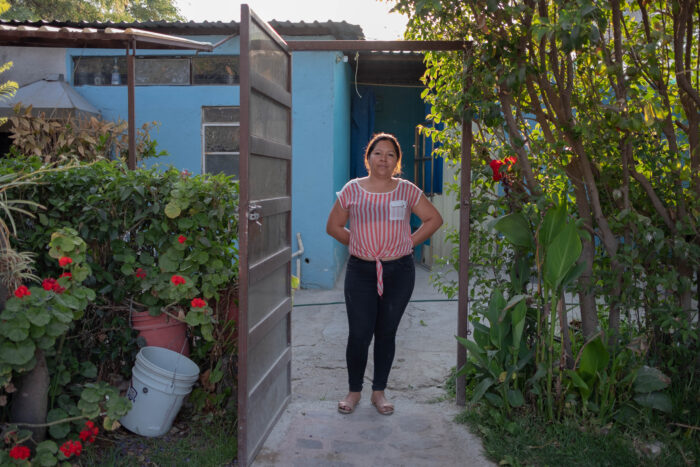
The Marias
For more than two months, dozens of women spent days and nightS in the Resistance Camp at the foot of the highway, with trucks passing by and the gas pipeline under their feet. Many brought their children or grandchildren, prepared food for the others, took turns going to the government offices to present documents, gave interviews to the media and went house to house, informing people about the risks of the project.
‘We don’t use anyone’s real name, so that we won’t be identified. We all call each other Maria,’ Marbella says.
Without discrediting all the efforts that her male colleagues have made during this time, Marbella recognizes that it has been the women who have been at the forefront of this struggle: ‘”We were the first to go out in the morning traffic taking the children to school; we were the first to appear at the meetings, the first to put our bodies in front of the machinery. Because this is our land, we have to defend our children’. Although Marbella is not a mother, many of her compañeras are. The Marias combine their paid work with caring for their children and grandchildren, housework, and taking part in the resistance.
We don’t use anyone’s real name, so that we won’t be identified. We all call each other Maria.
‘Women are generally the first to be affected by socio-environmental problems in the community, as they are the main caregivers in their families and participate in other work spheres, which can often double or sometimes triple their working hours,’ writes Daniela Gloss, a researcher from Guadalajara who studies the role of women in territorial defence.
For the most part, being in charge of obtaining and preparing food, children’s hygiene, housework, and other tasks that sustain family and community life, women are the first to notice the contamination or scarcity of water and the lack of access to healthy food.
But, with the same force that they are affected, women respond and defend their territories. And in the case of Indigenous women, such as the Marias in San Juan, they are not only defending their land, their water, and their bodies, but a whole way of existing.
Solidarity flows
Faced with this hostile scenario, the residents of San Juan decided that they had to ally with other organizations and groups. They met with the Committee to Save Temaca, Acasico and Palmarejo, the defenders of the Cerro de la Reina, the collective Un Salto de Vida, and the organized populations of Santa María Ostula and Cherán, to mention a few. So far they have exchanged experiences, information, pain, and advice on how to resist in the defence of life. They have also been accompanied by the Mexican Institute for Community Development (IMDEC), an organization that has been working for 60 years with communities and organizations in defence of their territories through education and grassroots communication.
Alongside these community-led processes, the residents of San Juan knew that they also had to push for legal action to stop the work that was violating their rights. ‘People began to cooperate. The children from the camp went from house to house asking people to get involved, and we held raffles and tombolas to raise the money needed to file an injunction,’ recalls Marbella, moved by the work of her community.
ZonaDocs sought an interview with representatives of the gas company to hear their part of the story, especially regarding the conflict in San Juan. After consulting with their PR advisors, they turned down the interview.
The power that this company has to carry out business throughout the country, getting away with wrongdoings and violating the community’s right to self-determination and territorial control is not an isolated case. Rather, it is the result of a series of state policies that benefit this and other hydrocarbon companies.
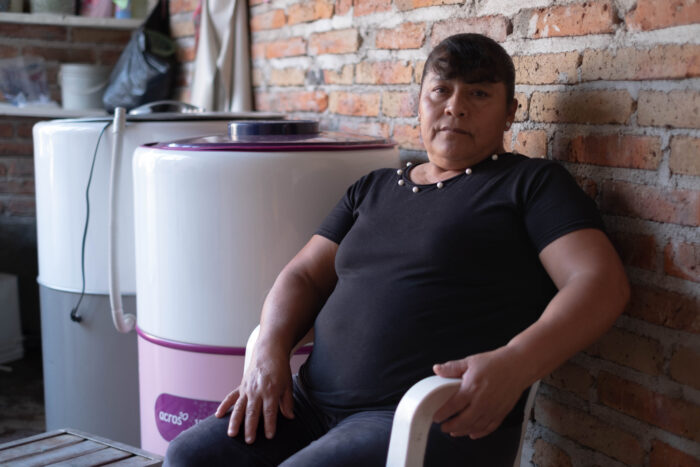
Civilian Human Rights
Little more than a week after the arbitrary arrests, IMDEC convened a Civilian Human Rights Observation Mission in the town of San Juan. The objective was to listen to the population and document the violations that had been committed to their rights for over a year and, subsequently, to issue a report with the observations and results of the visit.
More than a year passed and in August 2020, the Jalisco Human Rights Commission issued report 26/2020, recognizing the violation of a series of rights of the people of San Juan de la Laguna. The report proposes the suspension of the permits and construction of the gas pipeline, requests the closure of the investigation files against the people unjustly criminalized, recommends full reparation for the damages done to the community, and demands recognition of the community as an Indigenous people.
In addition to documenting the acts of repression, criminalization, and harassment that accompanied the installation of the pipeline, the report points out that the town has been neglected by municipal and state authorities in terms of public services such as water, drainage, street lighting, and pavements.
Although this was an acknowledgement of the community’s long-standing complaints, reports issued by human rights commissions are not binding, i.e., they cannot force the authorities to comply with their suggestions. For this reason, although the government of Lagos de Moreno officially accepted the recommendation in September of that same year, to date almost none of the points it establishes have been fulfilled.
The women of San Juan are tired and discouraged. But perhaps they are just in a moment of calm, like the tide regaining strength between one wave and the next.
The indomitable Chichimecas
Although the pipeline has now been completed, it is legally prevented from operating because it was built without prior consultation with the community and violates their right to free consent and the determination of their territory. If the company wanted to start up the pipeline, it would have to consult the population beforehand. Evidently, it has not done so.
Five years after an exhausting struggle in which the people of San Juan’s rights were finally recognized, their territory remains littered with dozens of yellow poles bearing the words ‘Gas Natural del Noroeste’. The pipes buried under their feet are not supposed to be carrying gas, but the residents suspect that this is not being respected.
What’s more, nothing assures them that the company is not looking for other legal ways to restart the project. This is why the recognition of their people as Chichimeca by the State Indigenous Commission (CEI) and their incorporation into the list of Indigenous peoples is crucial to guarantee their right to decide the fate of their own territory.
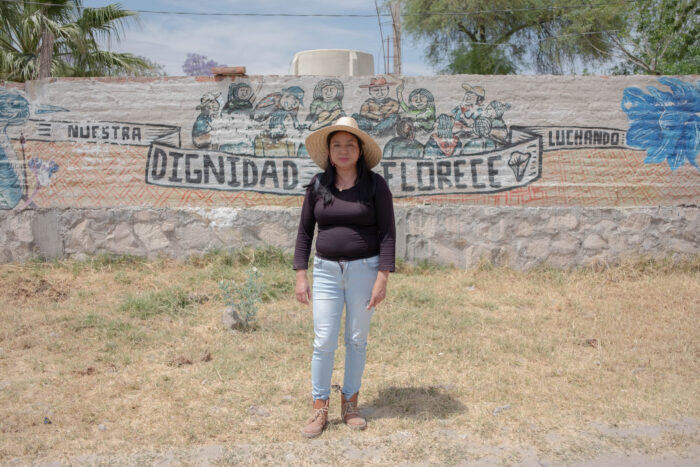
Even the official history told by the State recognizes the presence of Indigenous Chichimec communities in the territory before the arrival of the Spaniards. As with all colonization, the story of the founding of Lagos de Moreno is that of the Spaniards trying to eradicate the native peoples who lived there. However, in the lagoon they encountered those they described as the ‘indomitable Chichimecas’, and, therefore, decided to found the Villa a few miles away, populating it with ‘73 noble and valuable Spanish families’.
The descendants of this unconquerable community continue resisting more than 400 years later. They keep alive the traditions that the conquest could not take away from them and they proudly express themselves in their dances, festivals and craftwork. They also seek to keep their lagoon alive, and defend it as their ancestors did.
The descendants of this unconquerable community continue resisting more than 400 years later.
‘It is the emblem of our people, it is the life and the heart of our town. It is our sacred site, the place that gives us our identity, that helps us know our roots,’ says Marbella of the lagoon, and in every word you can feel the affection she has for her home.
ZonaDocs requested interviews with the municipal authorities of Lagos de Moreno, but as of the time of writing they have not responded.
LAB’s Environmental Defenders Series documents some of the work of environmental defenders in different Latin American countries, highlighting both the dangers they face and their achievements in defending their habitats and communities.
We aim to inform, motivate and connect an English-speaking public with the inspirational stories of grassroots Environmental Defenders’ work in Latin America and give EDs from countries where their battles are under-reported a greater voice.
We are working in partnership with trusted Latin American independent outlets. Find a full list, as well as further details of the series, here. Help us bring these stories to a wide audience by sharing them widely on social media.

